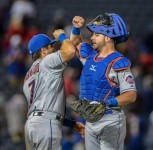
While the Mets have issues regarding their ability to extend their starting pitching, they have other areas to address as well. As it stands, the Mets may have around $97 million off the books by 2019. The Mets will need that money not just to re-sign pitching, but also to build their roster.
One key decision the Mets will have to make is at catcher. By 2019, Travis d’Arnaud will be a year away from free agency. Kevin Plawecki will be in either his first or second arbitration year around the same time.
As it stands going into the 2016 season, the team is best suited to have d’Arnaud starting with Plawecki as his backup. However, I do question if that arrangement is the best situation for the long term. It can be argued with the Mets going into this season with that arrangement, they risk the diminution of the trade value of either or both of these players. It’s a tough decision to make.
Travis d’Arnaud
d’Arnaud is a 27 year old catcher, who is presumably entering the prime of his career. He will be 31 when he becomes a free agent, assuming the Mets don’t work out an extension with him before that.
After working out his game in AAA in 2014, he seems to have fulfilled his offensive potential. When he returned, he hit .272/.319/.486 with 10 homers and 32 RBI in 69 games. He had a low BABIP of .287, which showed these numbers could get even better. They did in 2015. He hit .268/.340/.485 with 12 homeruns and 41 RBI in 67 games last year. He again had a low BABIP of .289. So there may still be room for improvement (assuming of course that the .287 – .289 BABIP is his natural level).
On top of these good and improving numbers, d’Arnaud has shown himself to be a good catcher. He was a highly rated pitch framer in 2014, and he was again in 2015. It’s important to get those extra strike calls to help reduce the pitches thrown by your pitching staff. In fact, d’Arnaud was the best at it last year. Despite his troubles in the World Series, d’Arnaud had an acceptable 32.6% rate of throwing out would be basestealers.
I understand there is more to catching than this, however the other things involved like blocking pitches in the dirt aren’t as quantifiable. Regardless, the most important thing for a catcher is to be a good receiver, and d’Arnaud has seemingly and statistically fine very well in that area.
Between d’Arnaud’s offensive and defensive abilities, you’d be hard pressed to find a reason not to extend d’Arnaud.
Unfortunately, there is a reason. Whether it’s fair or not, d’Arnaud is getting a reputation as injury prone. Last year, d’Arnaud had two freak contact injuries. In April, he broke his pinkie when he was hit by a pitch. When he returned from the DL, he suffered a hyper-extended elbow on a tag play. If that was it, I presume most teams would chalk it up to the freak nature of those injuries. However, he also had a number of injuries in the minors.
This year will be a big year for d’Arnaud. If he stays healthy, he’s primed for a big year; the type of year that will get him paid well in arbitration and free agency. If he gets injured again, he gives validity to the injury prone label thereby diminishing his arbitration and trade value.
Kevin Plawecki
Coming into the 2015 season, Plawecki was a well regarded prospect. Reflecting upon Plawecki’s 2015 season, it’s strange to think he was a highly regarded prospect more because of his bat than his glove.
Like d’Arnaud, Plawecki was exceptional in pitch framing last year. In fact, among big league catchers last year, he was second best. He was not as adept as d’Arnaud in throwing out baserunners. He only threw out 25.6% of basestealers. Given his needing to work on his footwork behind the plate, this should not come as a surprise. Unfortunately, the Mets losing Bob Geren is a hindrance because Geren was well regarded in his ability to work with catchers. That’s not to say Plawecki can’t improve.
Offensively, Plawecki is a different hitter than d’Arnaud. Whereas d’Arnaud has been seen as a power threat, Plawecki is seen as a gap to gap hitter. His offensive game was thought to be so advanced it was thought he could challenge d’Arnaud for playing time last year. That never happened. In part, that is because Plawecki had a tough rookie year.
In an admittedly weak Mets lineup, Plawecki hit a woeful .219/.280/.296 in 73 games. One could be further pessimistic about Plawecki’s offensive potential by looking to his AAA numbers. In AAA, in a hitter’s league, Plawecki only hit .262/.318/.392 over parts of two seasons. However, that’s not the full picture of Plawecki offensively.
Keep in mind, Plawecki only played 65 games in AAA, which is not a full season. Over the course of his minor league career, Plawecki was a much more palatable .290/.364/.432 hitter. Furthermore, while Plawecki’s major league numbers were lackluster, he had a low .277 BABIP. This suggests he’s due for an improvement at the plate next year. Overall, given how well regarded a prospect he is, it would be fair to presume Plawecki could be much better offensively next year.
We also don’t know what, if any effect, Plawecki’s sinus problems had last year. Plawecki admitted he felt dizzy during parts of last season. With his offseason surgery, and a year in the majors under his belt, Plawecki could be due for a much improved 2016.
The main thing holding him back will be d’Arnaud. As d’Arnaud’s backup, Plawecki will get limited reps at the plate hindering his ability to improve. Furthermore, with reduced playing time, Plawecki’s numbers can swing drastically. He’s as likely to have good numbers as he is to have poor numbers. Whichever way it goes, it’s likely to be a small sample size. With that said, if he has another poor offensive season, whether it’s driven by a low BABIP or not, it will be hard to unring that bell.
Another issue is Plawecki’s status as the backup catcher. While it’s understandable the Mets want Plawecki around to play a little more to help keep d’Arnaud healthy, it should be noted that this still makes Plawecki a backup catcher. While his status as a backup catcher will drive down his arbitration numbers, it will also drive down the return you may get for him in a trade.
Why Are They Both on the Roster
Simply put, d’Arnaud and Plawecki are both on the roster because it gives the Mets the best chance to win in 2016. The hope is that Plawecki can catch more frequently than your average backup to keep d’Arnaud fresh and healthy.
In addition, the Mets are contemplating letting both learn other positions to keep them both fresh and get them both enough at bats. It’s more important for Plawecki because he’s still a young prospect who needs at bats. d’Arnaud could also benefit because getting him out from behind the plate should keep him fresh over the course of the year.
As such, the Mets will need both in the majors. If they play it right, they could get good years from both while maintaining or improving their trade value. This could be Terry Collins biggest challenge in 2016.
d’Arnaud’s Potential Contract
Given the expense that will be incurred in locking up the Mets starting pitching, who the Mets keep may be driven by how expensive they will be.
Naturally, d’Arnaud’s value will vary depending upon his health. If d’Arnaud is healthy, the comp I would use for his contract is Russell Martin. When Martin signed his most recent free agent deal with the Blue Jays, he was coming off a career year where he hit .290/.402/.430. With that’s said, Martin was a career .259/.364/.399 hitter, and he was coming off his age 31 season. That is how old d’Arnaud will be when he becomes a free agent.
Now, d’Arnaud has hit for more power than Martin. However, Martin is more durable, and he has been seen as a leader. Martin has averaged 129 games behind the plate. d’Arnaud has not caught more than 108 in a season. However, assuming d’Anaud is healthy, you would envision him being a catcher who is comparable to Russell Martin, if not better. Accepting that premise, here is the breakdown of Martin’s contract:
- 2015: $7 million
- 2016: $15 million
- 2017: $20 million
- 2018: $20 million
- 2019: $20 million
Now, I’m not suggesting the Mets would or should give d’Arnaud a five year $82 million contract. Martin was a free agent, who could’ve signed with anyone. d’Arnaud loses some bargaining power by being arbitration eligible. If the Mets sought to enter into a deal with him, buying out some free agent years, his contract could reasonably look like this:
- 2018: $8 million – $10 million
- 2019: $10 million – $15 million
- 2020: $15 million – $20 million
- 2021: $15 million – $20 million
Assuming this is a fair and reasonable range, the Mets available money, assuming no increase in the payroll, would be between $82 million to $87 million to complete the roster.
Plawecki’s Cost
While d’Arnaud may cost the Mets between $10 – $20 million, Plawecki should cost less. If Plawecki remains with the club for all of 2016, he will likely become a Super Two player (assuming no changes to the CBA). As such, Plawecki would become arbitration eligible in 2019.
Now, if the Mets were smart about tinkering Plawecki’s service time, they could delay his arbitration eligibility until 2020. That would mean in 2019, the Mets would only need to pay him approximately $500-$600 thousand leaving the bulk of the $97 million to pay their starters and fill out the roster.
With that said, if you’re going to keep Plawecki, and make him the starter, you’re going to have to pay him eventually. Judging by typical arbitration figures, Plawecki could earn anywhere from $1 million to $5 million depending on playing time and production. If Plawecki becomes the starting catcher, and he’s productive, he would be at the higher end of the spectrum.
Depending on the decision the Mets make on Plawecki, that $97 million figure could be reduced to the range of $92 – $96 million.
The Decision
Selecting between d’Arnaud and Plawecki is no easy task. While d’Arnaud is more polished offensively and defensively, he is also three years older, and he has a long injury history. He is going to be a lot more expensive than Plawecki at the time the Mets starting pitchers will become free agents.
On the other hand, Plawecki is a well regarded prospect that has yet to produce in AAA or the majors. There is still time for him to fulfill his potential. However, that will be difficult with the Mets keeping him on as a backup limiting his at bats. The best course would be for the Mets to put him in AAA, manipulate his service time, and let him improve. It appears the Mets won’t do that.
No matter what the Mets do, the time to make the decision between d’Arnaud and Plawecki is fast approaching. Sooner or later, the Mets will have to choose between the two. In terms of preserving trade value that decision could be in 2016 or 2017, at the latest. In terms of cost, it appears 2019 is the last date. It would behoove the Mets to make the decision sooner rather than later to maximize the return they would get for either player.
Overall, while he may be much more expensive, and therefore a possible hindrance to re-signing a starter, I would keep d’Arnaud. He’s already shown himself to be an offensive force while being a good receiver. He’s a better bet to produce going forward than Plawecki.
Hopefully, he’s healthy enough to justify an extension, and Plawecki improves enough to become a big trade chip. Ultimately, that is the best case scenario for the Mets going forward.

The NBA All Star Game is coming this Sunday, and it will feature something no one has ever seen before in the Big Four Sports. The All Star Game jerseys will have advertisements. It’s the first step in what may eventually be a permanent feature on NBA uniforms.
Now, this is a common occurrence in other professional sports. Manchester United wears Chevrolet jerseys. The WNBA has advertisements on their jerseys. The MLS has a team named after a sponsor in the NY/NJ Red Bulls. Every NASCAR driver is a walking billboard. Despite all of this, it seems that baseball will sooner eliminate the DH than have advertising on their jerseys (non-Japan games aside).
The seminal moment on this issue arose in 2004. Initially, MLB entered into a deal where the logo for the movie Spider-Man 2 would appear on the bases:
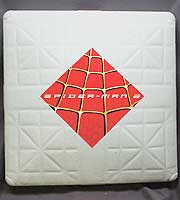
The fans lost their minds. The public outcry was so fervent that two days after the announcement MLB and the movie studio announced the advertisement would not appear on the bases. Over a decade later, it appears that MLB is no closer to advertisements on the field or on the uniforms. For what it’s worth, Commissioner Rob Manfred stated that he does not see advertisements on jerseys happening.
That’s a good thing because jersey advertisements are a problem waiting to happen.
It was less than a decade ago the naming rights issue to Citi Field was a hot button issue. The Mets and Citigroup came under increased scrutiny over the naming right deal because Citigroup had just received a taxpayer bailout. There were cries for the Mets to return the money and find a new sponsor. The outcry would most likely have been even worse if the Citigroup logo was on the Mets jerseys. For those that took issue with the deal, the jerseys would’ve been a constant reminder of that.
As luck would have it, the Mets couldn’t have a Citi Field patch on their uniforms as it was not permitted by MLB. Instead, the Mets had the “Inaugural Season” patch instead of a “Citi Field” patch.
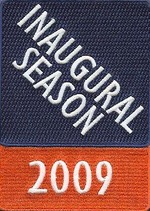
That season the Mets caught more flak for a poorly designed patch than their deal with Citigroup, so to an extent, MLB’s policy had a positive effect.
So while the NBA goes forward with their plan to advertise on jerseys, MLB will continue to keep the field and uniforms free from advertising. At the end of the day, I prefer MLB’s line of thinking. I’m loathe to think of a scandal involving an advertiser that became the focus of each and every Mets game. It was bad enough in 2009. It won’t be and better in 2016 and beyond with Twitter and the like.
So no, advertisements do not belong on MLB uniforms. I’m glad it’s going to stay that way.
Editor’s Note: this article was first published on metsmerizedonline.com
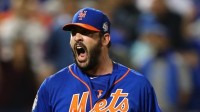
With Carlos Beltran giving his opinion on Terry Collins decision to send Matt Harvey back out for the ninth inning, I began to think of the different ways the Mets won or lost postseason series. Can you name the players involved in the last play in each of the Mets postseason series? Good luck!

Normally, when a player leaves the Mets, I like to take stock of all the good things they did with the Mets. With Eric O’Flaherty it’s near impossible.
When the Mets acquired him, I thought he was the missing piece to the Mets bullpen. He was going to be the LOOGY the Mets needed. Instead, O’Flaherty was just terrible. He had a 13.50 ERA and a 2.654 WHIP. Honestly, I’m not even sure he was that good. To put it in perspective, his ERA+ was 29. TWENTY-NINE! While I could say that there are no words to describe how poorly he pitched with the Mets, I think saying 29 describes it perfectly.
To be fair, there was one good thing that came from the O’Flaherty trade. The corresponding move was the Mets designating Alex Torres and all his hats for assignment. For that, Mets fans do owe him a little bit of gratitude.
Now, he’s off to Pittsburgh on a minor league deal. I’m sure now that he’s completed his post-Tommy John season and his being under the tutelage of Ray Searage, O’Flaherty will return to the effective LOOGY he once was. I’m positive hell revert back to the guy that has a 1.69 career ERA against the Mets.
In any event, O’Flaherty is a Pittsburgh Pirate ending his reign with the New York Mets. I think I speak for everyone when I say that’s best for everyone.
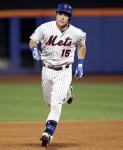
For one reason or another, Travis d’Arnaud switched uniform numbers with bench coach Bob Geren heading into the 2015 season. Now that Bob Geren has left the Mets for the Dodgers, the Mets should not give out the number 15 again.
It’s what the Mets have traditionally done with numbers they have anticipated they will retire. After Tom Seaver was traded to the Reds, no other Met would wear the number 41. After Mike Piazza left the Mets as a free agent, the Mets never re-issued 31. These were two future Hall of Famers that were expected to enter the Hall of Fame as a Met. These are the only players to have their numbers retired by the team. With them, the Mets have created the standard that they will retire the numbers of players that have entered the Hall of Fame as a Met.
With Carlos Beltran announcing he may retire after this year, the Mets should give him similar treatment.
Beltran is coming to the end of a terrific career, one that is certainly worthy of the Hall of Fame. Right now, it appears it’ll be up to Beltran as to whether he enters the Hall as a Met, Royal, or a blank cap. For what it’s worth, Beltran has said that if he receives the honor, it’s possible he could enter the Hall of Fame as a Met. If so, the Mets should effectively retire the number now instead of handing it out to the Fred Lewises and Val Pascuccis of the world. Looking at the Mets current roster, the number hasn’t been assigned. The players without designated numbers aren’t players of Beltran’s caliber.
d’Arnaud should be the last Met to ever wear the number 15. Hopefully, one day the Mets can retire the number 15. Even better, it would be great to retire number 7 for d’Arnaud.
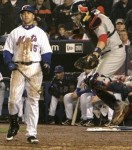
According to WAR, Carlos Beltran is the sixth best Met of all-time. He’s higher ranked than recent Hall of Fame inductee Mike Piazza. He’s a future Hall of Famer. The end of his Mets tenure was the beginning of Terry Collins tenure. When Beltran speaks, he deserves your full attention.
With that said, a person should always pick their spots when to interject an opinion. In his interview with George A. King, III, Beltran offered his opinions on Terry Collins sending Matt Harvey out for the ninth in Game 5 of the World Series. Collins’ decision ranks right up there with Grady Little leaving Pedro Martinez in during Game 7 of the 2003 ALCS. It’ll be talked about for generations. Everyone will have a perspective. For what it’s worth, here was Beltran’s take on Collins sending Harvey back out there:
He was looking down and I felt that he wanted to take Harvey out. But at the same time, Harvey was pitching such a good game and Harvey wanted that moment. He went with what Harvey showed him and not what he was thinking. That’s an experience for him. Later on [taking Harvey out] will happen. He will say,’My friend, I will give you a kiss of I have to, but I have to get my closer.’ It was a bad decision to leave him in, but in his heart I felt that he wanted to make a different move.
It’s a fine and reasonable take, but man, I really don’t want to hear Beltran talking about decision that lead to the end of playoff series. Much like the end of the 2015 World Series, his strikeout at the end of the 2006 NLCS will forever haunt Mets fans. For his part, Beltran said he couldn’t do anything with the pitch. To be fair, it was filthy:
However, with that said, he didn’t try to foul it off. He didn’t try to make a fielder make a play. There would be no little groundball up the first baseline. No, Beltran was beat, and he didn’t go down swinging. This doesn’t change the fact that he was a great Met. It doesn’t mean he shouldn’t be a Hall of Famer. It doesn’t even mean his opinion on Collins sending Harvey back out there was wrong.
No, it just means that when it comes to series altering decisions, Beltran’s opinion is the last one I want to hear.
Editor’s Note: this was first published on metsmerized.com
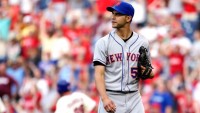
We are all guilty at times of becoming too focused on statistics when it comes to determining a player’s worth. Sometimes we overlook the value of being able to take the ball whatever the situation. Ultimately, that was Carlos Torres‘ greatest attribute.
Over the past three years, Terry Collins stretched that rubber arm of his to a breaking point. Torres served as a spot starter, long man, and set-up guy in his three years with the Mets. In his time with the Mets, he averaged over 1.1 innings per appearance. Torres’ rubber arm allowed Collins to rest the other arms in the Mets bullpen. There is immense value in a pitcher that can constantly take the ball in a variety of spots.
However, saying Torres’ value was taking the ball whenever needed is underselling him. Torres was an effective pitcher with the Mets. Torres had a 3.59 ERA, a 1.253 WHIP, and an 8.2 K/9 in his three years in Flushing. He was a good pitcher. Unfortunately, after all the time and hard work he put in with the Mets, Torres was hampered by a hamstring injury which prevented him from pitching in the postseason.
However, that’s not to say he didn’t have an impact on the 2015 season. He started and finished the most amazing defensive play of the season:
We also discovered he might’ve been the fastest Met on the team. Finally, he gave up his number 52 for Yoenis Cespedes. I expected nothing less from someone who was a team first guy.
With the Mets signing Antonio Bastardo, there wasn’t any room for him left on this Mets team. It’s a cruel twist of fate we see all too often in sports. A guy gives everything he has to help a losing team, and when things begin to turn around, he is sent packing. It’s unfortunate, but it’s the way things work. Sure, Torres deserved better, but that still doesn’t mean there was room for him on the 25 man roster.
With that said, it shouldn’t come as no surprise that Torres didn’t return to the Mets. Not even on a minor league deal. Instead, Torres signed a minor league deal with the Braves. He should have no problem making their Opening Day roster as Torres can fill any role he teams needs.
Teams always need a player like Torres, and I’m sure at varying points of the season, so will the Mets. He was a player who brought real value to the team. It certainly leaves a hole in the organization not having him and his rubber arm around anymore. He was a good Met, and he will be missed.
Thank you Carlos Torres.
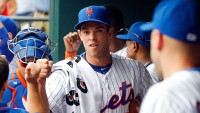
Last year, I made sure to bring my son to Steven Matz‘s first start. I wanted him to be there to see what we all presumed was the last installment of what was to be a Mets super staff.
It was a great day. Matz allowed only two runs over 7.2 innings. He went 3-3 at the plate with four RBI. It was such an amazing first start that his celebrating grandfather became a legend in his own right:
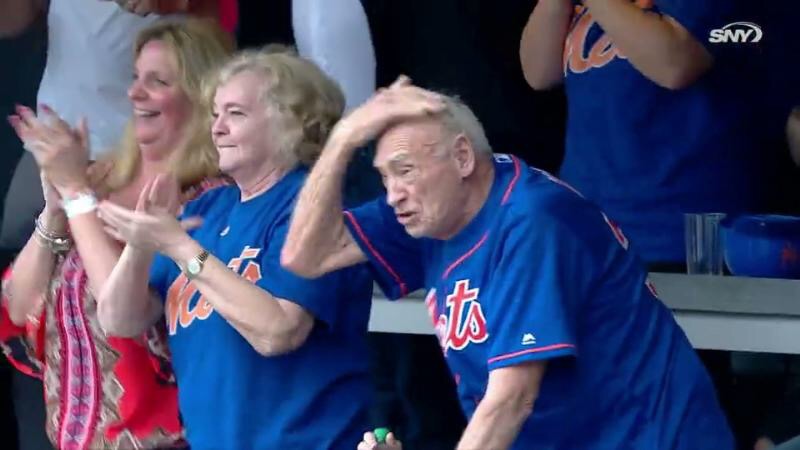
Matz followed that up with a terrific start in Los Angeles allowing no runs over 6.0 innings recording eight strikeouts. After that, Matz was shut down with an torn oblique that Dan Warthen checked out himself before the Dodger start.
He would’ve pitch again for another two months. He came back, and he went 2-0 with a 2.86 ERA in four starts. However, those numbers seem better than he pitched. In those four starts, batters hit .297/.330/.374 against him. He has a 1.45 WHIP. He would then have a back injury. This injury would not prevent him from being named to the postseason roster.
Matz wasn’t great in the postseason. He was 0-1 with a 3.68 ERA. He pitched into the sixth inning once in his three starts. He had a 1.432 WHIP.
What can we glean from all of this? Absolutely nothing. Matz’s first two starts were exciting, but they were only two starts. The four starts at the end of the season were after two months of complete inactivity. His postseason starts came more than two weeks after his last regular season start. His second postseason start came eight days later. His World Series start was 10 days later. He wasn’t getting enough work to stay sharp.
As of today, he’s probably a favorite to be the National League Rookie of the Year. Most Mets fans expect him to be an ace. I think that’s not fair. Matz hasn’t showed himself to be that good yet. The projections for him aren’t that rosy.
I don’t know what’s driving those numbers. I don’t know if his injuries last year are driving those low innings projections. It could be his two injuries last year.
I’m not sure how it is to presume Matz is injury prone. While he did have two freak injuries last year, it’s not fair to say he’s injury prone. So far, all we have is the two injuries this year and a longer than usual rehab from Tommy John surgery. So while I’m sure the Mets will have an eye on his innings pitched, I also believe, he has a reasonable chance to be healthy for a full season.
The next issue is why do the projections see Matz having such a high ERA next year. My presumption is that this is based on Matz’s 3.61 FIP last year. Based upon his FIP numbers, the projected ERAs are certainly justifiable. However, again, four of those starts were made after Matz had no baseball activities for two months due to his lat injury.
We all have hope Matz will be great in 2016. However, there is nothing from his 2015 season that can establish he will be good or bad next year. Whatever happens, I’m going to enjoy the ride.

During Jeurys Familia‘s time answering questions on the Mets Twitter account, the dumbest baseball argument was resurrected:
A sandwich is a sandwich, a hot dog is a hot dog! #AskFamilia https://t.co/rht7efanCs
— New York Mets (@Mets) February 9, 2016
Sigh.
I guess it’s a sign that the Mets are in such good shape for the upcoming season that we’re back to arguing about whether or not a hot dog is a sandwich.
Alright, let’s start with the basics. It should be fair to say that most people do not believe they are ordering a sandwich when they are ordering a hot dog at a game. However, there’s no reason why that should be dispositive. For example, most people, the State of New Jersey, and the Supreme Court believe a tomato to be a vegetable. It’s not. A tomato is a fruit. No matter how you argue it, it’s a fruit.
Now, I bring this up because there are many arguments on the tomato. The arguments are similar. It’s a gut feeling, or wanting to tax an item, that is the driving force. If you want to rely upon tax codes and the Supreme Court, I refer you to the New York State Department of Taxation and Finance who clearly defines a hot dog in a bun as a sandwich.
Personally, I wouldn’t want to rely on that. Tax codes and the like aren’t written to be correct. Rather, they are written to exact as much revenue as possible. So let’s try another route.
The dictionary definition of a sandwich is two or more slices of bread, or a split roll, with a filling. So yes, under the dictionary definition, a hot dog on a roll is a sandwich. It’s a position food experts seem to share:
— Alton Brown (@altonbrown) February 4, 2016
I’ve heard all the contrary opinions. When you order a sandwich, you’re not expecting a hot dog. Maybe, but when I order peanut butter and jelly, I’m expecting that to be on bread.
When you go to a game and order a hot dog, you expect to get a hot dog on a bun. True, but when your spouse tells you to get hot dogs from the grocery store, do you bring them home already cooked and in buns, or do you purchase them separately?
Look, it’s not a sandwich, it’s just a hot dog. To me this is an argument that just seeks to prove its underlying point. It’s like saying Lucas Duda isn’t a good first baseman because of one throw while ignoring his 57 homers in two years.
So overall, whether we like it or not, a hot dog on a bun is a sandwich. Now, can we please move onto more important topics like who will pitch the sixth inning for the Mets this year?

Yesterday, the Mets signed Roger Bernadina to a minor league deal. Anytime the Mets sign a player on a minor league deal, I think it’s a great low risk high reward move.With that said, I’m curious why the Mets signed Bernadina.
Bernadina is a 31 year old outfielder that was originally signed by the Montreal Expos. He played three full seasons with the successor Nationals before being released. Bernadina bounced around a bit since, and he spent all of 2015 in the minor leagues. He’s a career .236/.307/.354 hitter. He’s played all three outfield positions in his career reasonably well. Considering the Brandon Nimmo injury and the Darrell Ceciliani trade, this was a good depth move. Or was it?
His current deal with the Mets he has a June 15th opt out clause. That’s the same day the Mets can trade Alejandro De Aza without any restrictions. This begs the question whether Bernadina was signed as minor league depth, or whether he was signed so the Mets could trade De Aza? Is Berndina slated to be the fifth outfielder or is he really just depth to protect against injury?
Time will tell. In either scenario, this was a solid organizational depth move by the Mets.
